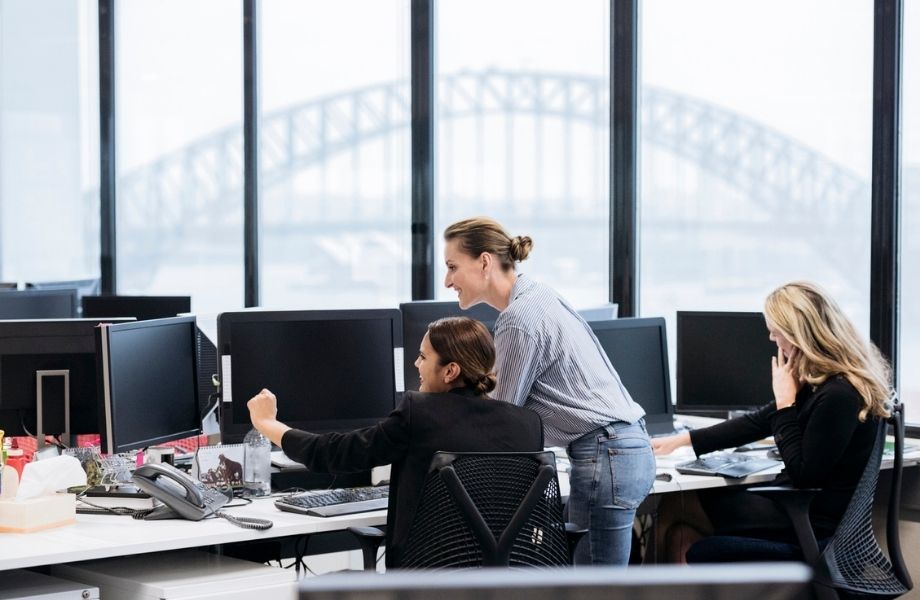Resources
Newsletter
Stay up to date and with the latest news, projects, deals and features.
SubscribePwC, Caltex, KPMG and Suncorp are among a number of large companies to reduce their office requirements in Sydney during the past 12 months, adding to concerns about the future of Sydney’s CBD.
However leasing incentives are keeping demand strong, according to commercial agents.
The strong bounce back of the Australian economy, which grew by 1.8 per cent during the March quarter to put it 0.8 per cent ahead of where it was pre-pandemic, coupled with incentives from NSW government, has served to encourage businesses to find office deals.
CBRE NSW director Tim Courtnall said demand was currently strong.
“The number of tenant inquires year-to-date is the highest we’ve seen in five years,” he said.
“There is confidence in the economy and growth projections, and companies are again focused on retaining and attracting talent.
“Outside the big financial institutions and professional services firms, the deals year-to-date have predominantly been between 200sq m to 500sq m and 1000sq m to 4000sq m with only one deal for more than 7000 square metres.
“Growth is the number two driver for relocations—number one is lease expiry.
“This is very promising when coupled with the strong underlying economic fundamentals.”

A report recently released by Macquarie found that 66 per cent of recruiters were strongly recruiting for CBD roles, 72 per cent of which were for white-collared positions.
The survey found 74 per cent of candidates would prefer a hybrid model of working from home and in an office, with three days in the office preferred, and just 2 per cent wanting to work in the office full time.
According to recruiters, the wants of employers differ to those of the candidates, with 56 per cent of employers preferring a hybrid working model and 32 per cent preferring employees to come into the office full time.
The latest Property Council of Australia survey shows physical occupancy in the Sydney CBD was 59 per cent and is not expected to improve materially during the next three months.
Greater flexibility is now the most cited reason influencing physical occupancy, a shift away from the health and safety concerns of 2020.
Sydney office vacancies are around 12 per cent, which is 7 per cent higher than before Covid-19 lockdowns.
“Our data shows that the finance, insurance, and media and communications industries make up more than half of the sub-lease space available,” Colliers manager, office leasing, Angela Carroll said.
Incentives for renewals are nearing 40 per cent, according to Colliers.
“Incentives for renewals are generally corresponding with those being offered for relocations, so incentive on top of fit out,” Carroll said.
“The market offering for incentives, in most cases, sits between 25 per cent and 35 per cent.
“Tenants are definitely reconsidering how they look at space. They must take into consideration the number of staff now working from home, and thereby offering flexibility for their employees to do that while still having the office space available should the majority come in to work on any one day.
“Tenants are reconsidering how they use and fit out their space, be it for existing or potential new premises. With hybrid working models being adopted, focus work can be done at home with time spent in the office best used for collaboration and communication with colleagues.”
But SMEs, in particular, are enquiring about CBD office space.
“There is more comfort and certainty around businesses,” Savills NSW director, office leasing, Tom Mott said.
“Companies are signing five-year-plus leases.
“The fact is people have been home for 12 months and are looking forward to getting back into the office and conversing with their colleagues face-to-face.
“Incentives have doubled since 2017 so that is appealing too.”
Mott said sub-leasing was only really happening at the big end of town.
“Big companies are under pressure from boards and shareholders to minimise costs so sub-leasing is an option for them,” Mott said.
“But that is a bit artificial in my view because they are limiting their growth potential.”